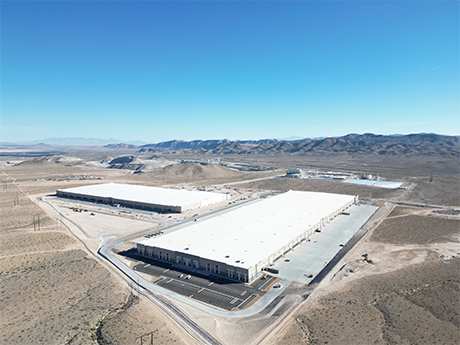— By Paul Sweetland, SIOR, Vice Chairman, Colliers Doherty Industrial Group —
Throughout 2023 we were often asked if the Las Vegas industrial market had “missed the memo” on the slowdown since other western markets were experiencing a slowdown that we had yet to see. With record under-construction numbers and net absorption numbers being on pace to finish the year with the second highest total of the last five years, Las Vegas didn’t appear to be slowing down. However, there are certain sectors that show initial signs of a pending change.
Land Sales:
Land sale transactions have seen a 75 percent drop from the prior year. Peak land pricing was $36.00 per land square foot in the summer of 2022, and by the fourth quarter of 2023 it had dropped 25 to 35 percent as demonstrated in the limited closings that occurred. Although lease rates continued to increase, developer underwriting had seen significant changes in exit CAP rates along with debt, equity and construction financing due to an unstable interest rate environment with the Feds continued rate increases at the fastest pace in 40 years. Lower land pricing or significant lease rate increases are going to be necessary for the foreseeable future to allow for new development to pencil.
Capital Markets:
Capital markets saw a drop in the number of transactions similar to land sales, partially due to a substantial pause in the amount of leased inventory hitting the market. CAP rates for Class A industrial product went from historic lows in April 2022, in the 3 percent range, to increasing over 300 basis points and hovering around 6 percent at the end of 2023. Although there was continued demand to purchase industrial investment properties, we saw the exchange buyer pool dry up as 1031 transactions slowed. The placing of debt on these assets, even after closing all cash, became more and more difficult.
Under Construction and Planned Buildings:
The Las Vegas Market surpassed 160 million square feet of inventory in 2023. This is made up in eight different submarkets with the largest amount of inventory (41 percent) being located in North Las Vegas. At the end of 2023 we had a record 30 million square feet of planned inventory with an under-construction pipeline of 5.5 million delivering in the fourth quarter alone. If all inventory is completed and not pushed into 2024, this will bring a record estimated 12 million square feet of delivered product for the year. To put this in perspective, 6 million square feet has been the average deliveries for the prior five years with a previous high of 8 million square feet in 2020.
Vacancy and Demand:
Although we had over 90 percent pre-leasing through the third quarter of 2023, vacancy has gone from its record low of 1.3 percent in the third quarter of 2022 increasing to 2.1 percent in the third quarter of 2023. We expect this trend to continue up as we see more deliveries without tenants. Most of us remember that deliveries without tenants used to be normal and we are likely returning to some normalcy. Our strong demand continues to be the driver of our historically low vacancy and our lease rates continue to move up in most size ranges. We are estimating 8.1 million square feet of net absorption for 2023 which will put us at the second most on record to 2021. Included in this year’s absorption is the Hey Dude Shoes lease of 1,043,620 square feet located at the Northpoint Development in Apex. This is the largest under roof industrial lease ever to take place on a speculative basis. We continue to see demand coming from 3PL’s, construction, wholesale and manufacturing with many tenants still coming from California.
What’s in store for ‘24:
In summary, while the data does not reflect a significant change, there are signs that the market does appear to be slowing down. Rather than a severe market correction, it appears that the market is returning to a level of normalcy that has not been seen since early/mid 2020. If inflation hangs around and the Fed is forced to continue to increase rates, the Las Vegas market will see more of the same for land and investment sales. If the tenant demand continues this will create a very tight supply over the next 24 months. If not, we may see the continued trend of increased vacancy. We believe the fundamentals along with the evolving economy of Las Vegas will continue to draw investment and continue to provide a great location for many businesses that are seeking lower taxes and less government red tape.


